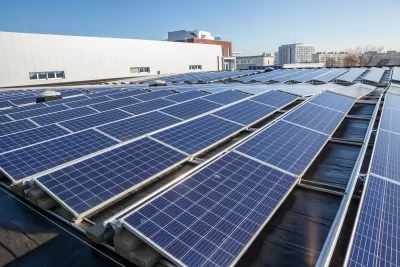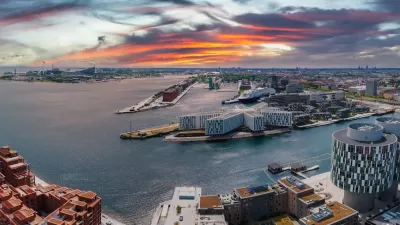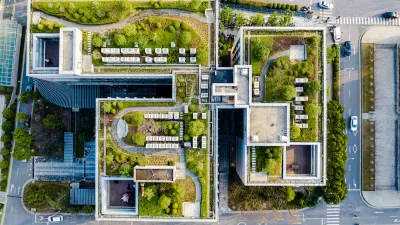Green building standards and efficiency retrofits are not keeping up with energy demand, resulting in a net increase in greenhouse gas emissions from buildings.

According to a new study, building emissions in the United States grew by 3 percent between 2010 and 2020, with the number projected to grow barring “significant interventions,” writes Nish Amarnath in Smart Cities Dive. “The study, which builds on an analysis conducted in 2022, assessed historical building emission trends and retrofit rates to pinpoint disparities between current initiatives and measures required to meet climate change goals.”
The report identified barriers to efficiency retrofits including workforce skill shortages, access to funding, and limited public awareness. The report also lists five ‘crucial enablers’ for : “setting net-zero building performance standards, developing a national retrofit plan, providing financial incentives and support, upskilling the workforce and scaling that supply chain, and promoting best practices and data transparency.”
The report points out that the funding allocated to net-zero building standards in the Inflation Reduction Act is not “sufficient to meet the size of the [emissions reduction] challenge.” However, the costs of decarbonization are becoming lower as renewable energy generation becomes more common and affordable.
FULL STORY: Without significant interventions, US building emissions will continue to increase

Alabama: Trump Terminates Settlements for Black Communities Harmed By Raw Sewage
Trump deemed the landmark civil rights agreement “illegal DEI and environmental justice policy.”

Planetizen Federal Action Tracker
A weekly monitor of how Trump’s orders and actions are impacting planners and planning in America.

Why Should We Subsidize Public Transportation?
Many public transit agencies face financial stress due to rising costs, declining fare revenue, and declining subsidies. Transit advocates must provide a strong business case for increasing public transit funding.

Understanding Road Diets
An explainer from Momentum highlights the advantages of reducing vehicle lanes in favor of more bike, transit, and pedestrian infrastructure.

New California Law Regulates Warehouse Pollution
A new law tightens building and emissions regulations for large distribution warehouses to mitigate air pollution and traffic in surrounding communities.

Phoenix Announces Opening Date for Light Rail Extension
The South Central extension will connect South Phoenix to downtown and other major hubs starting on June 7.
Urban Design for Planners 1: Software Tools
This six-course series explores essential urban design concepts using open source software and equips planners with the tools they need to participate fully in the urban design process.
Planning for Universal Design
Learn the tools for implementing Universal Design in planning regulations.
Caltrans
Smith Gee Studio
Institute for Housing and Urban Development Studies (IHS)
City of Grandview
Harvard GSD Executive Education
Toledo-Lucas County Plan Commissions
Salt Lake City
NYU Wagner Graduate School of Public Service





























